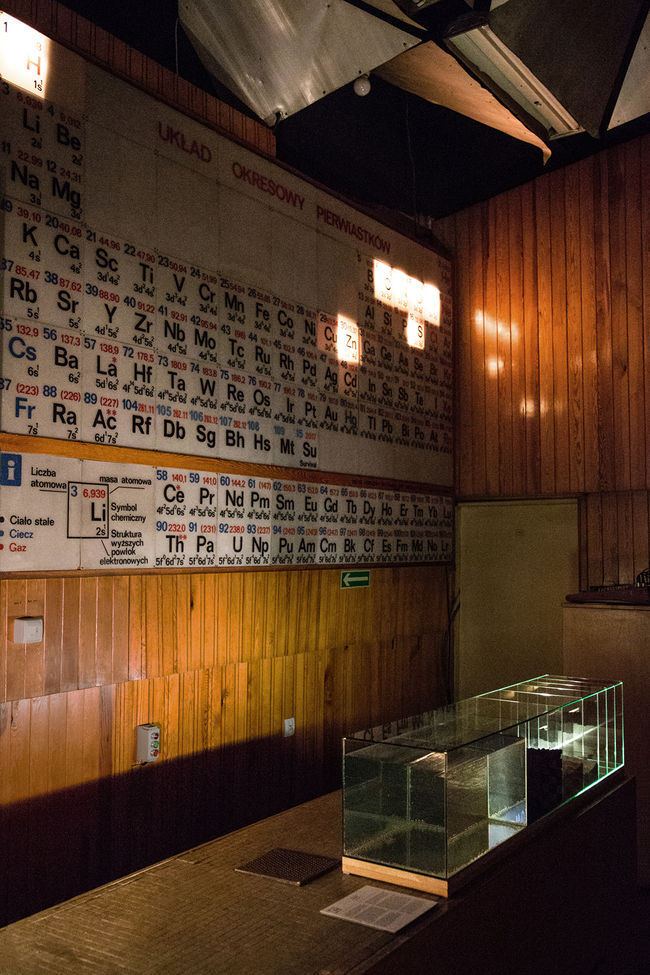Humanus
Survival 15 Art Review, Stratification
Humanus, object
Survival 15 Przegląd Sztuki, Rozwarstwienie
Humanus, obiekt

PL
Survival 15 Przegląd Sztuki, Rozwarstwienie
Audytorium Wydziału Chemii Uniwersytetu Wrocławskiego, ul. Fryderyka Joliot-Curie 14, Wrocław
Humanus, obiekt
W siedmiu akwariach znajdują się substancje stanowiące skład chemiczny cała ludzkiego, w tym przypadku kobiety o wadze 54 kg. Są to kolejno: 40 l wody, 10kg węgla, 3 kg azotu, 1 kg wapnia, 3 g żelaza, 1 g cynku, 1 g siarki.
W antropologii filozoficznej i w wielu religiach ciało ludzkie jest drugim, obok duszy, elementem tworzącym człowieka jako osobę. W tym kontekście użycie rozwarstwienia jako metody badawczej pozwala na przyjrzenie się fizyczności człowieka, jego funkcjom biologicznym, ciału jako tworowi poddanemu procesom chemicznym jak wszystko inne na ziemi, o czym, na co dzień zdajemy się nie pamiętać. Wizualizacja ta ukazuje strukturę ciała w sensie stricte naukowym, jest ściśle związane z tematem chemii i reakcji chemicznych.
Na podświetlonej tablicy Mendelejewa (element zastany w Audytorium), będą zapalone tylko pola z oznaczeniami pierwiastków budujących żywy organizm, wszak światło jest symbolem życia. Jednocześnie forma pracy, przywołująca na myśl katafalk, przypomina, że człowiek jest jedynie częścią składową świata i jego procesów.
EN
Survival 15 Art Review, Stratification
The Auditorium of the Faculty of Chemistry of Wrocław University, ul. Fryderyka Joliot-Curie 14, Wrocław
Humanus, object
Inside seven tanks there are substances which make up the chemical composition of the human body, in this case – of a woman weighing 54 kg. They are: 40 litres of water, 10kg of carbon, 3kg of nitrogen, 1 kg of calcium, 3g of iron, 1g of zinc and 1g of sulphur.
In philosophical anthropology and in many religious, the human body is the second – after soul – element which constitutes a human being. In this context, using stratification as a research method makes it possible to closely examine the physical nature of humans and their biological functions. The body is thus viewed as an object undergoing the same chemical processes as all other things on Earth, which we seem to forget in our everyday life. This visualisation reveals the structure of the body in a strictly scientific sense, tightly connected with chemistry and chemical reactions.
On the illuminated board, which is part of the auditorium’s original decor, fields bearing the symbols of elements making up a living organism have been lit up – after all, light symbolises life. The form of the work, which brings to mind associations with a catafalque, reminds us that the human being is a constituent of this world and its processes.
Foto: Krzysiek Orłowski






